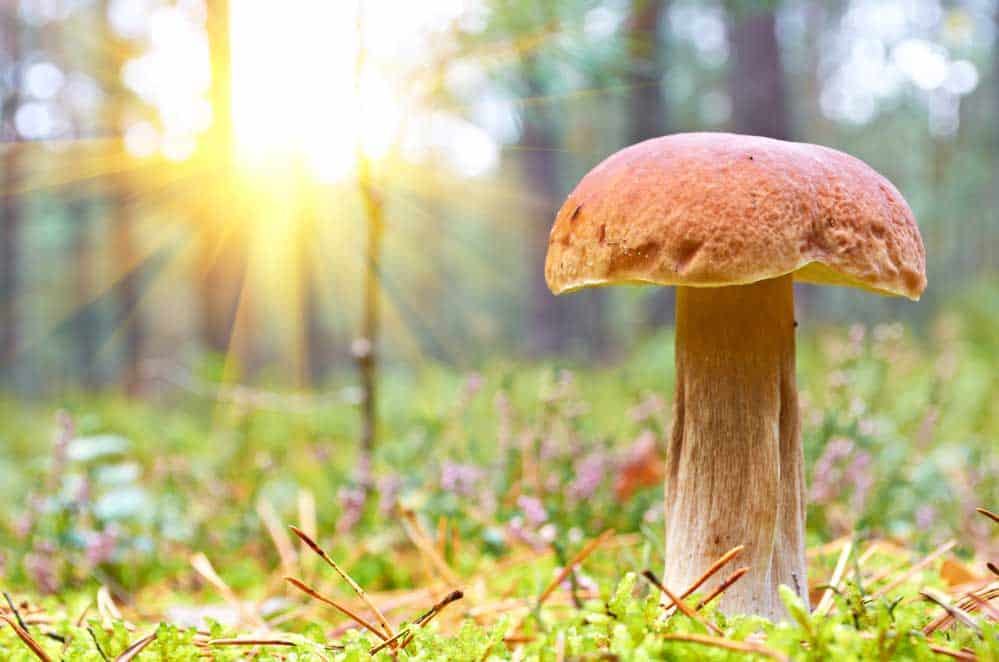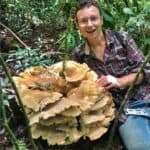Table of Contents
Mushrooms are capable of growing in the complete absence of light. In nature, mushrooms do this before peeping out from under the leaf litter or the depths of a log. While mushrooms can grow in darkness, it does alter their growth form and appearance. Most notably, it reduces their pigmentation (color) and capsizes. When cultivating mushrooms, it’s recommended to have some light during the fruiting process.
Why Light is important for Mushroom Growth
Mushrooms aren’t plants. They don’t harness energy from the sun through the process of photosynthesis. So why do mushrooms need light?
Mushrooms need light for the same reasons as us. To understand the world around them and orient themselves in it. They don’t do this with eyes, as we do. They do this by triggering the expressions of certain genes. These gene expressions result in a more favorable growth of the mushroom.
Light has 2 main Effects on Mushroom Growth
- Light Darkens Color: Mushrooms grown in the dark will usually be completely white. This is because light stimulates the formation of the pigments that give them color. Think of this like mushrooms getting a tan! These pigments protect them from UV radiation. When mushrooms grow in the dark, such as beneath leaf litter, they are light in color.
- Light Increases Cap Size: For many mushrooms, light increases the size of the mushroom cap. Large caps are beneficial for most mushrooms because it helps with spore dispersal. The downside is that larger caps have trouble squeezing between leaves, wood, and other substrates. In contrast, smaller caps are better at growing through these substrates. So mushrooms only form large caps once they’ve escaped their substrate and have “seen” the light.
Light also increases Vitamin D Content of the Mushroom
Not only do we share the ability to “tan” with mushrooms, but we both form vitamin D when exposed to sunlight. This means mushrooms exposed to sunlight are richer in vitamin D!
You can actually do this with mushrooms at home. This works with store-bought, wild-harvested, and even dried mushrooms! This is because mushrooms are rich in a vitamin D precursor called ergosterol. Ergosterol transforms into vitamin D when exposed to sunlight.
To do this, just place your mushrooms in the sun for a couple of hours for an extra boost of vitamins! Increase their surface area by slicing them for greater results! This only works with sunlight or other sources of UV radiation.
How much Light should I give my Mushrooms?
If you’re growing mushrooms, you’re going to want to provide some light while fruiting. This makes for a nicer color, shape, and overall superior mushroom.
A bit of light during the day will go a long way. Only 3-4 hours a day are necessary, but as long as the light isn’t intense, you can have more. Use filtered or indirect light. While sunlight is best, LEDs or other artificial light sources will also work. Excessive light may dry up your mushroom-fruiting bodies. During incubation and other steps of cultivation, it’s better to have darkness.
Enoki Mushrooms are grown without Light
Cultivators of Enoki Mushrooms fruit their mushrooms in complete darkness. This is because dark growing conditions are necessary to achieve their valued growth form. The manipulated environment results in long thin stems, small caps, and white color. In nature, Enoki mushrooms actually look much different. Aside from growing them in darkness, high CO2 induces the production of long, thin stems.
Quick Summary:
- Mushrooms don’t need light to grow, but light will affect their growth.
- Grown in darkness, they will usually be light in color and have smaller caps.
- Mushrooms grown with light will have a darker color and larger caps.
- Darker colors help mushrooms protect themselves from the UV radiation of the sun.
- Light exposure increases the vitamin D content of mushrooms!


Good to know. I leave my spores in the bathroom light in the petri dish. Is that okay?